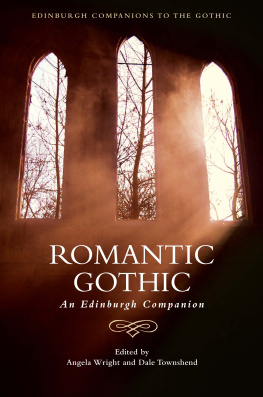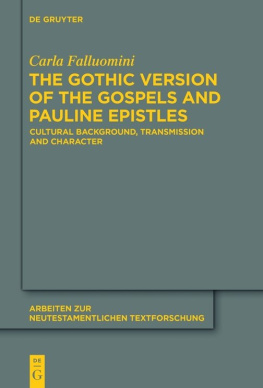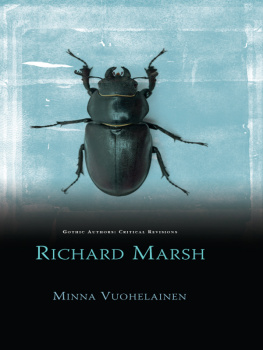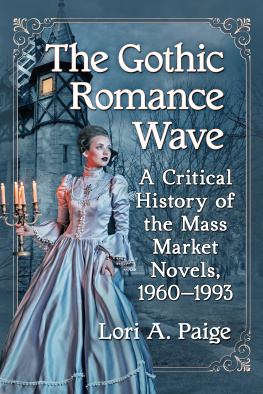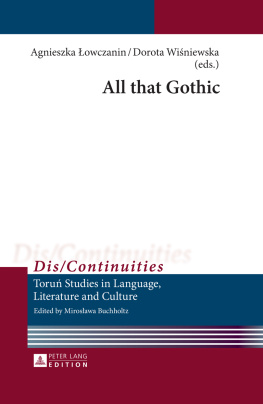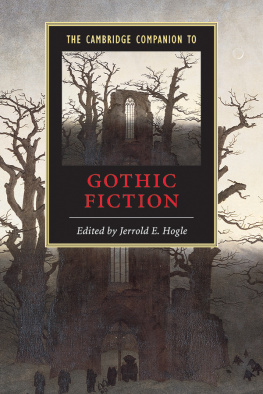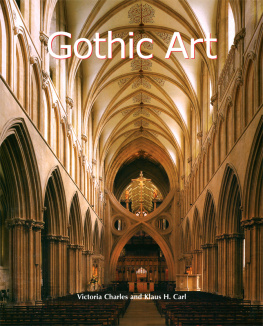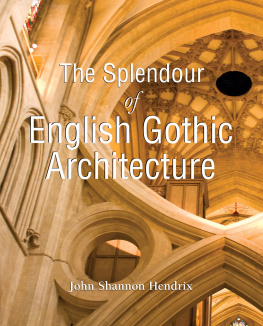
Romantic Gothic
Edinburgh Companions to the Gothic
Series Editors
Andrew Smith, University of Sheffield
William Hughes, Bath Spa University
This series provides a comprehensive overview of the Gothic from the eighteenth century to the present day. Each volume takes either a period, place, or theme and explores their diverse attributes, contexts and texts via completely original essays. The volumes provide an authoritative critical tool for both scholars and students of the Gothic.
Volumes in the series are edited by leading scholars in their field and make a cutting-edge contribution to the field of Gothic studies.
Each volume:
Presents an innovative and critically challenging exploration of the historical, thematic and theoretical understandings of the Gothic from the eighteenth century to the present day
Provides a critical forum in which ideas about Gothic history and established Gothic themes are challenged
Supports the teaching of the Gothic at an advanced undergraduate level and at masters level
Helps readers to rethink ideas concerning periodisation and to question the critical approaches which have been taken to the Gothic
Published Titles
The Victorian Gothic: An Edinburgh Companion, Andrew Smith and William Hughes
Romantic Gothic: An Edinburgh Companion, Angela Wright and Dale Townshend
American Gothic Culture: An Edinburgh Companion, Jason Haslam and Joel Faflak
Women and the Gothic: An Edinburgh Companion, Avril Horner and Sue Zlosnik
Forthcoming Titles
Scottish Gothic: An Edinburgh Companion, Carol Margaret Davison and Monica German
Visit the Edinburgh Companions to the Gothic website at: www.euppublishing.com/series/edcg
Romantic Gothic
An Edinburgh Companion
Edited by Angela Wright and Dale Townshend
EDINBURGH
University Press
editorial matter and organisation Angela Wright and Dale Townshend, 2016
the chapters their several authors, 2016
Edinburgh University Press Ltd
The Tun Holyrood Road,
12(2f) Jacksons Entry,
Edinburgh EH8 8PJ
www.euppublishing.com
Typeset in 11/13 Adobe Sabon by
IDSUK (DataConnection) Ltd, and
printed and bound in Great Britain by
CPI Group (UK) Ltd, Croydon CR0 4YY
A CIP record for this book is available from the British Library
ISBN 978 0 7486 9674 1 (hardback)
ISBN 978 0 7486 9675 8 (webready PDF)
ISBN 978 1 4744 0923 0 (epub)
The right of Angela Wright and Dale Townshend to be identified as the editors of this work has been asserted in accordance with the Copyright, Designs and Patents Act 1988, and the Copyright and Related Rights Regulations 2003 (SI No. 2498).
Contents
Dale Townshend and Angela Wright
Vincent Quinn
Deborah Russell
Diego Saglia
Joel Faflak
Jerrold E. Hogle
Robert Miles
Douglass H. Thomson and Diane Long Hoeveler
Peter J. Kitson
Natalie Neill
Part II: National and International Borders
Meiko OHalloran
Mark Bennett
Victor Sage
Carol Margaret Davison
Jane Hodson
Andrew Smith
Patrick R. OMalley
Tom Duggett
Alison Milbank
Chapter 1
Gothic and Romantic: An Historical Overview
Dale Townshend and Angela Wright
Romantic Gothic: for some, the title of this volume of essays might read as oxymoronic, if not overtly confrontational. That is, despite the critical attention that, since the late 1960s, the relationship between Gothic writing of the late eighteenth and early nineteenth centuries and the Romantic aesthetics with which they were contemporary has received, we might still be inclined to think of the Gothic and the Romantic as two oppositional, even mutually exclusive modes. Indeed, of all the taxonomic distinctions that structure our negotiation of literary history and canonicity, it would seem that those between the Romantic and the Gothic, though by no means uncontested, are some of the most inveterate. For many cultural commentators over the past two centuries, the phrase Romantic Gothic might be accused of yoking together, as if by a certain violence, two utterly heterogeneous modes.
Despite the fact that Romantic and Gothic are both literary terms that were retrospectively annexed to the forms that they inhabit, it seems relatively easy, at first glance, to appreciate the differing contours of these two discrete literary strains through a brief consideration of two serendipitously linked texts: William Wordsworths Lines Written A Few Miles Above Tintern Abbey, On Revisiting the Banks of the Wye During a Tour, July 13, 1798, the final poem included in the first edition of Wordsworth and Samuel Taylor Coleridges collaborative but anonymously published Lyrical Ballads, With A Few Other Poems (1798), and Sophia Ziegenhirts The Orphan of Tintern Abbey, a three-volume romance that was published by A. K. Newman at the Minerva Press, London, in 1816.
As the Advertisement that prefaced Lyrical Ballads in 1798 made clear, Wordsworth and Coleridges collection of poetry was to be conceived of as wholly experimental in nature, as a new and somewhat audacious attempt at adapting the language of conversation in the middle and lower classes of society to the purposes of poetic pleasure (Gamer and Porter 2008: 47). Indeed, it is largely on the basis of this and other democratising gestures, both formal and political, to be found across the collection that the publication of Lyrical Ballads in 1798 is still, today, often hailed as the moment of inauguration for the Romantic school or movement in Britain. In his otherwise hostile review of this curious poetic experiment, Robert Southey singled out Tintern Abbey as the one poem in Lyrical Ballads in which the author seemed to discover still superior powers to those displayed in The Female Vagrant, boldly claiming that, in the whole range of English poetry, we scarcely recollect any thing superior to a part of the following passage and extracting some forty-seven lines of the poem in defence of his claims (Gamer and Porter 2008: 149). With retrospect, it is clear to see that Southeys praise for Tintern Abbey unwittingly celebrated aspects of the poem that, though long before the category was in place, would subsequently be celebrated as some of the defining features of Romanticism and Romantic aesthetics: the nostalgia of the mature poet as he recalls that boyish time when like a rose / I bounded oer the mountains, by the sides / Of the deep rivers, and the lonely streams, / Wherever nature led (lines 6880); the still, sad music of humanity (line 92) that the persona descries beneath the picturesque prospect of the ruin; the elevated thoughts of a sense sublime / Of something far more deeply interfused engendered by the poets sensuous engagement with the natural world, that nurturing and mystical force that is the nurse, / The guide, the guardian of my heart, and soul / Of all my moral being (lines 11012). If, by Romanticism, we mean the lyrical outpourings of a refined poetic consciousness that both perceives and creates the sometimes picturesque, sometimes sublime world around it, the poetic outpourings of a psyche that, through its visionary powers of recollection, is tenderly expressive of feelings of unremembered pleasure (line 32), then Wordsworths Tintern Abbey seems to epitomise it. In the process of imaginative appropriation, Tintern Abbey itself, the ruin of the Gothic or medieval Cistercian abbey situated on the west bank of the river Wye, Monmouthshire, loses its relations to both history and the contemporary present (Levinson 1986), becoming, instead, bound up in the personas reflections upon childhood, memory, nature and human relationships.
Next page
